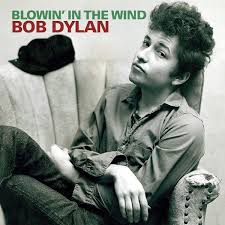
About the song
Bob Dylan’s “Blowin’ in the Wind” is one of the most iconic songs in the history of modern music, a poignant and powerful anthem that has resonated with generations since its release. Written by Dylan in 1962 and released as a single in 1963, this song became a defining piece of his second album, “The Freewheelin’ Bob Dylan”. The simplicity of its melody combined with the depth of its lyrics has made it a timeless classic.
The release of “Blowin’ in the Wind” marked a significant moment in both Bob Dylan’s career and the broader social and cultural movements of the 1960s. As a young artist, Dylan was rapidly becoming a voice for change, and this song solidified his role as a leading figure in the folk music revival and the civil rights movement. The song’s questions about peace, war, and freedom resonated deeply during a time of significant social upheaval and change.
At its core, “Blowin’ in the Wind” is a series of rhetorical questions that challenge the listener to think deeply about issues of justice, equality, and human rights. Lines like “How many roads must a man walk down before you call him a man?” and “How many times must the cannonballs fly before they’re forever banned?” capture the essence of the song’s message. Dylan’s use of simple, yet profound questions invites listeners to reflect on the world around them and consider their own roles in the quest for a better society.
The social impact of “Blowin’ in the Wind” cannot be overstated. It quickly became an anthem of the civil rights movement, adopted by activists and sung at rallies and protests across the United States. The song’s universal themes of longing for peace and justice struck a chord with people from all walks of life, making it a powerful tool for social change. Artists across various genres have covered it, further cementing its place in the cultural lexicon.
Musically, “Blowin’ in the Wind” is characterized by its simple, yet haunting melody, which allows the lyrics to take center stage. Dylan’s performance is straightforward and unadorned, emphasizing the song’s folk roots and making its message accessible to a wide audience. This simplicity is part of what gives the song its enduring power, as it strips away any distractions and focuses the listener’s attention on the pressing questions at hand.
The influence of “Blowin’ in the Wind” extended beyond the 1960s, continuing to inspire and challenge listeners in the decades that followed. It has been included in countless compilations of essential songs and remains a staple in Dylan’s live performances. Its questions remain relevant, serving as a reminder that the quest for peace and justice is ongoing.
In conclusion, Bob Dylan’s “Blowin’ in the Wind” is more than just a song; it’s a call to action, a plea for awareness, and a testament to the power of music as a force for social change. Its timeless message, simple yet profound melody, and historical significance make it a cornerstone of Dylan’s illustrious career and a beacon of hope for future generations. As long as there are questions left unanswered in the quest for a just and peaceful world, the song’s refrain will continue to echo: “The answer, my friend, is blowin’ in the wind.”
Video
Lyrics
How many roads must a man walk downBefore you call him a man?How many seas must a white dove sailBefore she sleeps in the sand?Yes, and how many times must the cannonballs flyBefore they’re forever banned?The answer, my friend, is blowin’ in the windThe answer is blowin’ in the windYes, and how many years must a mountain existBefore it is washed to the sea?And how many years can some people existBefore they’re allowed to be free?Yes, and how many times can a man turn his headAnd pretend that he just doesn’t see?The answer, my friend, is blowin’ in the windThe answer is blowin’ in the windYes, and how many times must a man look upBefore he can see the sky?And how many ears must one man haveBefore he can hear people cry?Yes, and how many deaths will it take ’til he knowsThat too many people have died?The answer, my friend, is blowin’ in the windThe answer is blowin’ in the wind